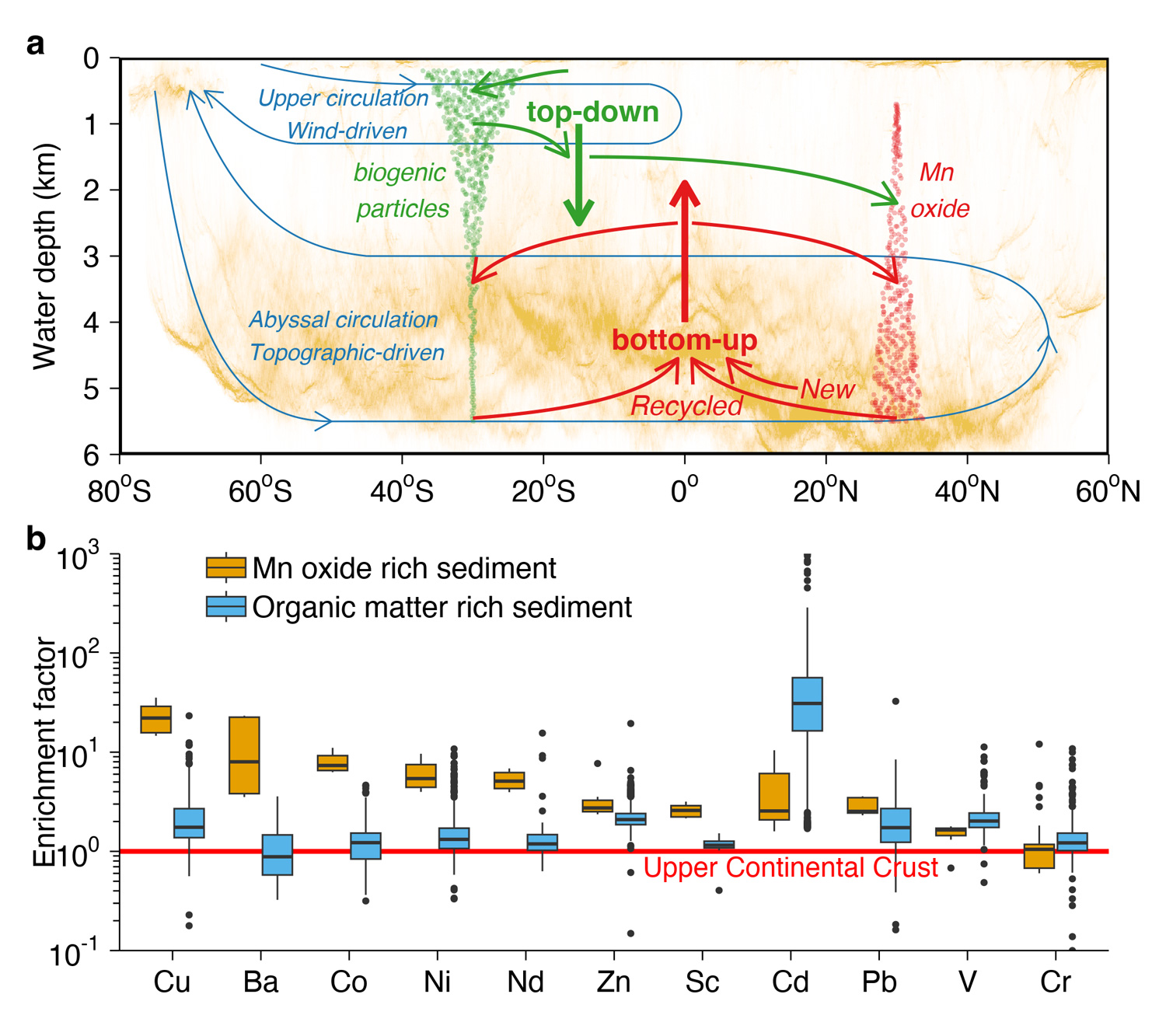Rare Earth and neodymium isotope cycles in the abyssal Pacific Ocean are shaking up the paradigm established for particle reactive tracers
Based on a comprehensive study of the Rare Earth Elements (REE) and neodymium (Nd) isotope cycles along a north-south section of the central North Pacific Ocean, Du and colleagues (2025, see reference below) demonstrate the importance of the abyssal sediment source in the control of the trace element and isotopes (TEI) marine distribution. Their findings are shaking up the paradigm – currently applied in most Ocean Biogeochemical Models (OBMs) – which assumes that TEI distributions are primarily controlled by surface sources, biological uptake or adsorption followed by reversible scavenging by dissolved-particulate exchange along the water column. Instead, they suggest that for elements with greater affinity for manganese oxide than biogenic particles:
- scavenging acts as a net sink throughout the water column,
- a benthic flux contributes to increasing elemental concentrations with water depth,
- and the abyssal source consists of two components: one recycled from elements scavenged by water-column particles, and another newly introduced to the water column via marine silicate weathering within sediments.
This leads them to propose an original scheme of these TEI cycles, illustrated in the figure below.

Reference:
Du, J., Haley, B. A., McManus, J., Blaser, P., Rickli, J., & Vance, D. (2025). Abyssal seafloor as a key driver of ocean trace-metal biogeochemical cycles. Nature, 642, 620–627. Access the paper: 10.1038/s41586-025-09038-3
